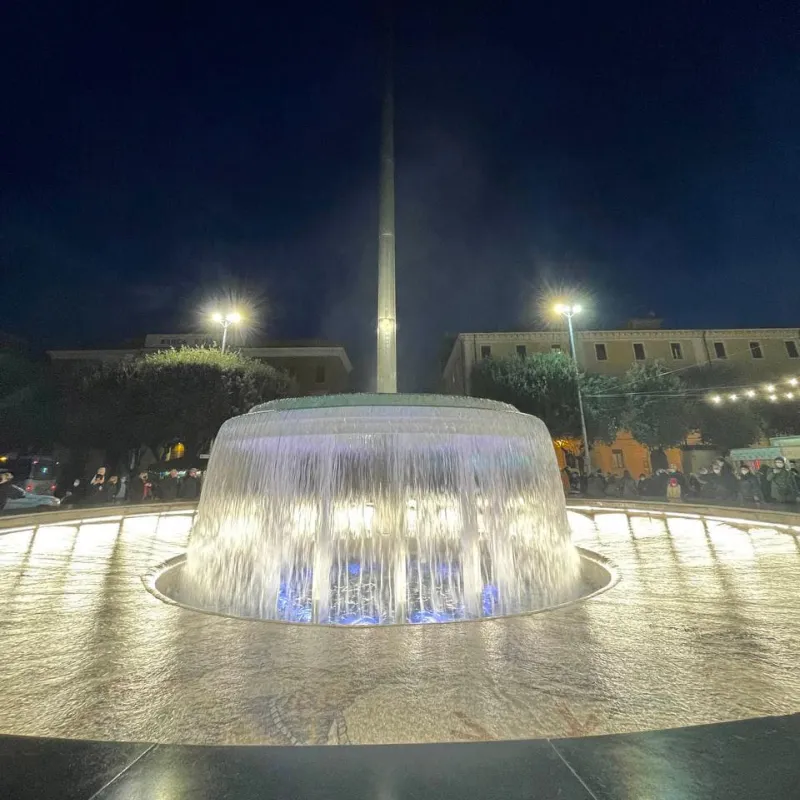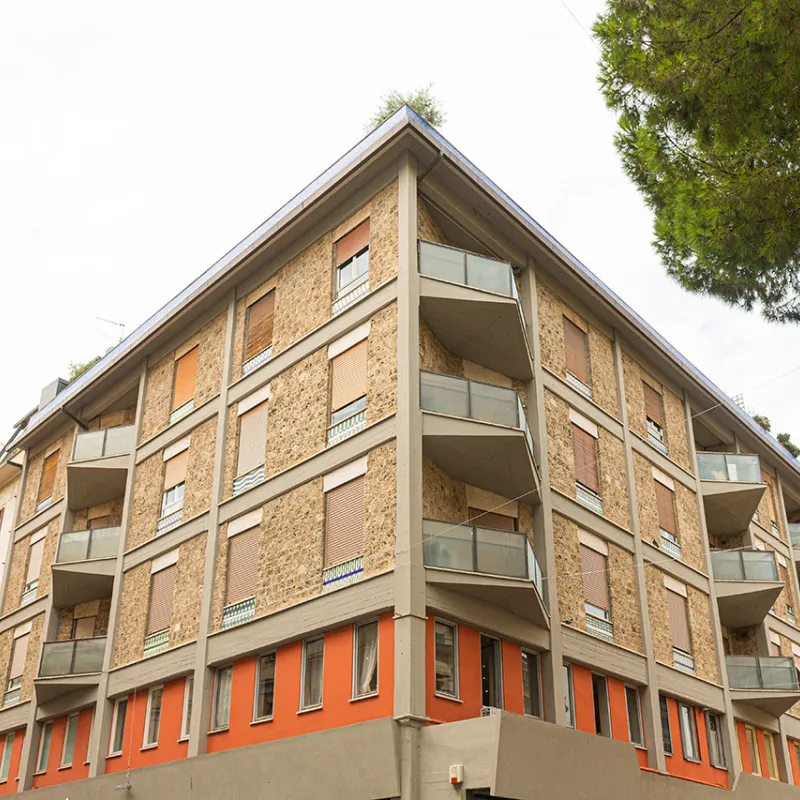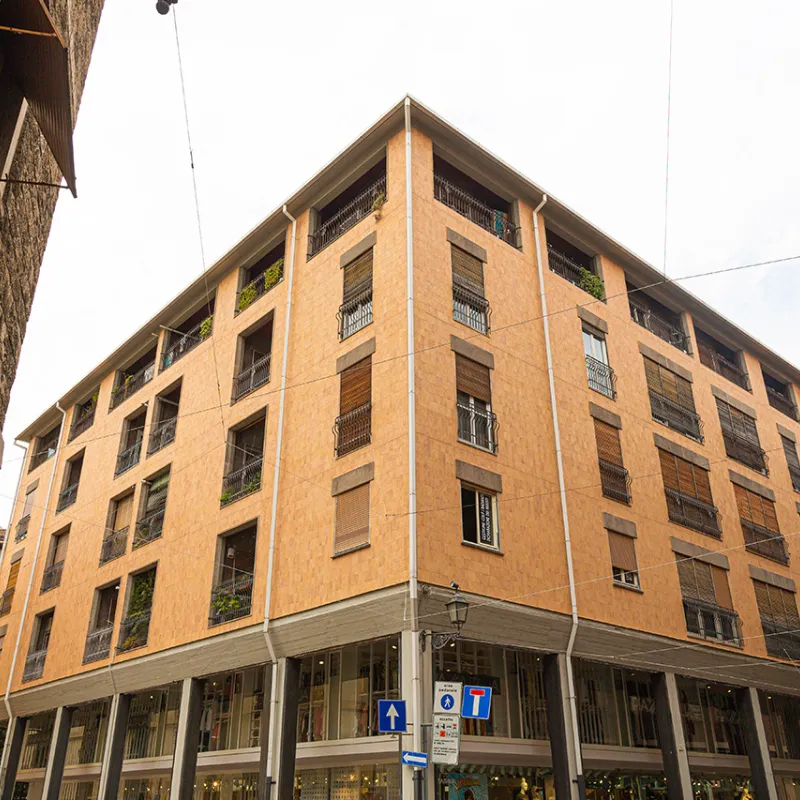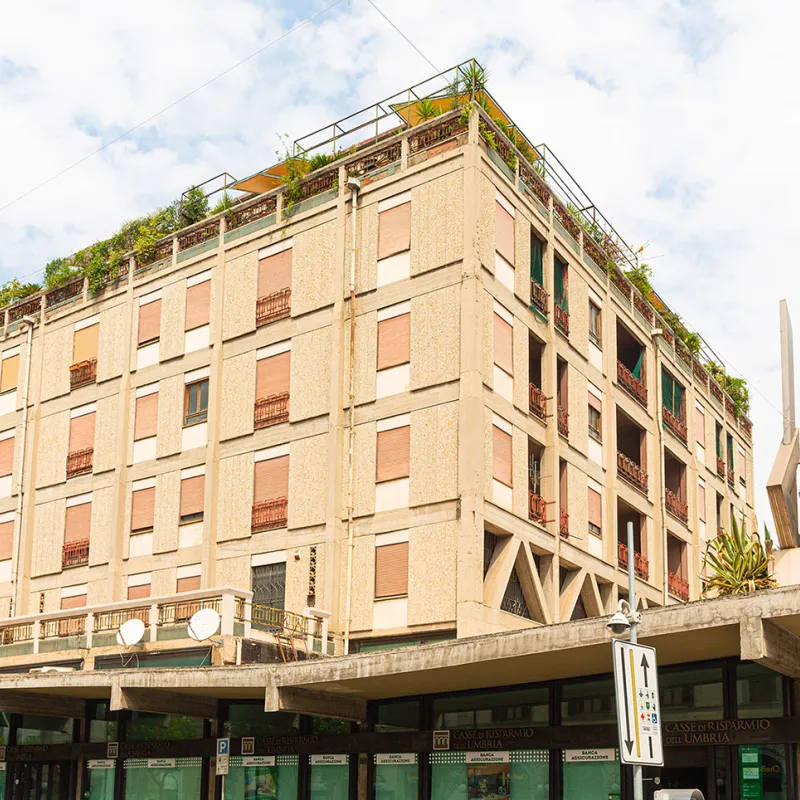Ridolfi’s Terni
The work of the Roman architect Mario Ridolfi has been fundamental for postwar reconstruction of the town of Terni.
The link between Ridolfi and the town of Terni, already begun in the 30s with the creation of the fountain in Tacito Square and the participation in the national competition for the new regulatory plan, continues in the immediate postwar period with the reconstruction plan and, in 1960, with the regulatory plan, continuing up to the 80s with the drafting of some detailed plans of the town centre.
His work is addressed at creating a new town image, remodeling the historical centre, re-planning the functional spaces and re-evaluating the suburbs; all this giving great importance to the use of materials, first and foremost pietra sponga (tuff stone), but also brick, reinforced concrete and majolica, rendering them functional for adorning buildings.
Some of Ridolfi’s buildings are architectural masterpieces, such as the Chitarrini, Franconi and Pallotta houses, the Briganti and Staderini buildings, the Leonardo da Vinci junior high school, the Fontana complex and the Lina house in Marmore.
THE STAGES OF THE ITINERARY

The monumental fountain in Tacito Square is the iconic emblem of Terni and a symbolic representation of its steel industry, which has made it famous beyond national borders and has defined its identity for over a century.

When drawing up the reconstruction plan for the bombed city, Mario Ridolfi included Via Primo Maggio parallel to Corso Tacito and identified an open space that linked the two streets: Largo Villa Glori.

Palazzo Briganti deserves a position of excellence in Terni, "marked" by the designs of Mario Ridolfi and Wolfgang Frankl.

The building, designed by Mario Ridolfi with Wolfgang Frankl between 1960 and 1964, is occupied by a hotel, offices, shops and residences.